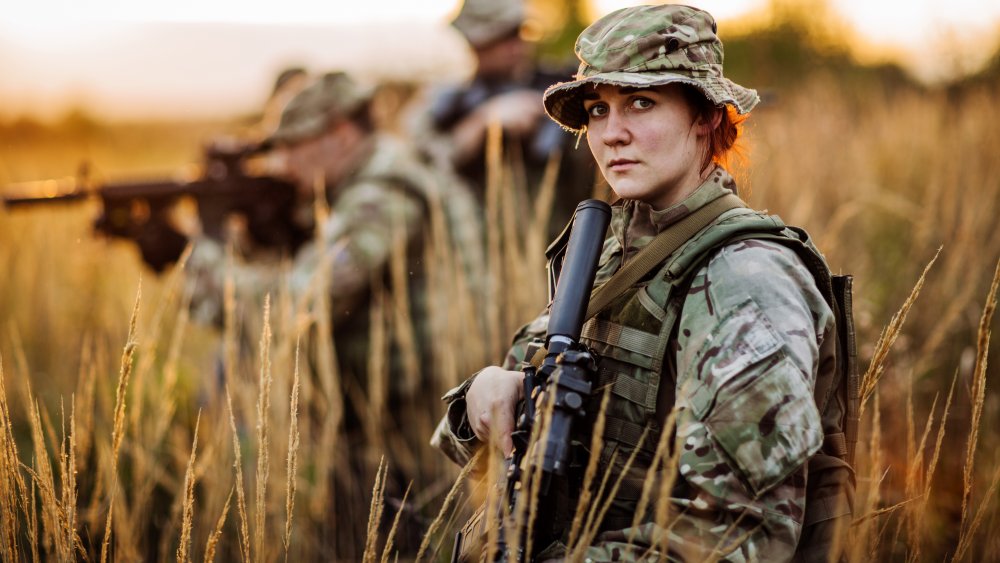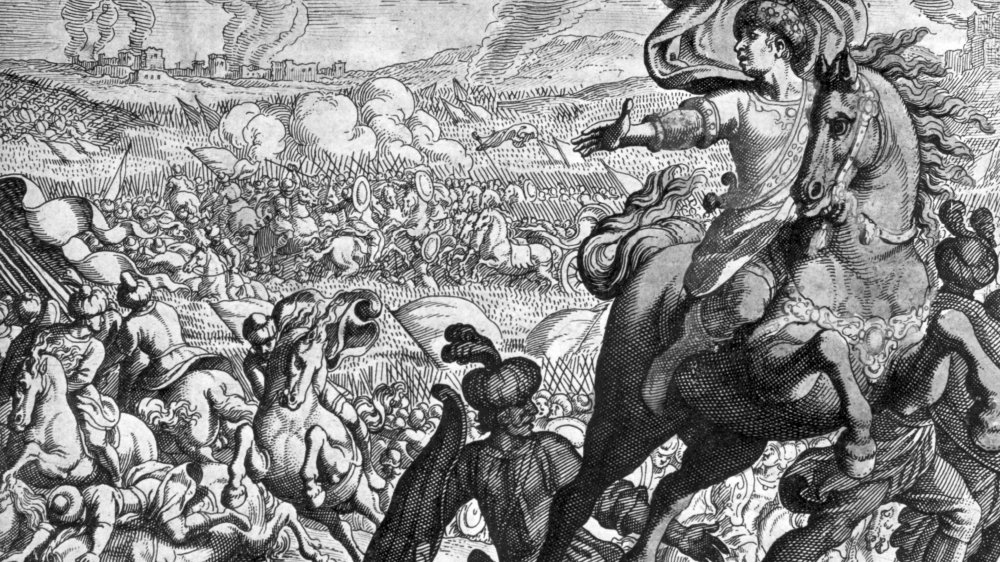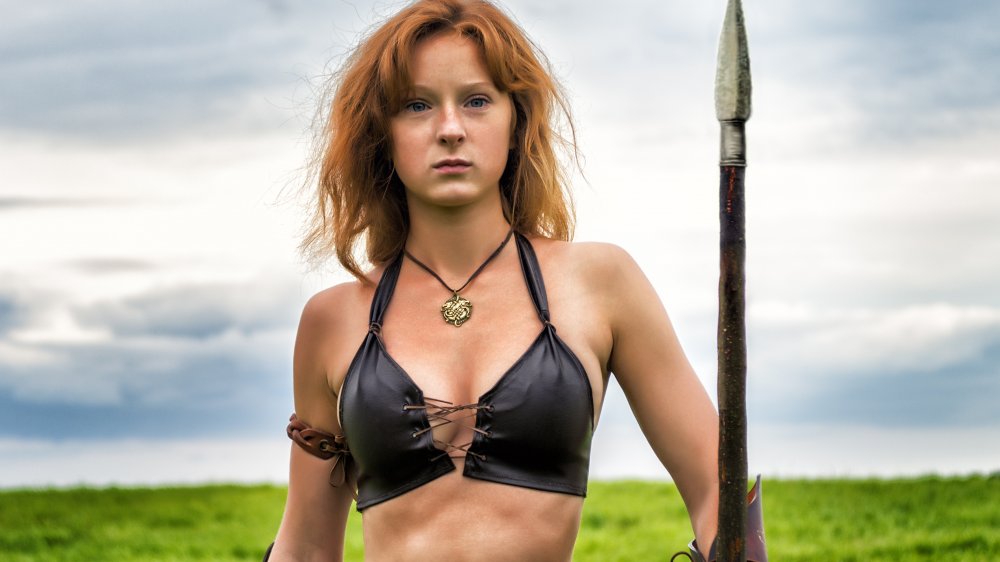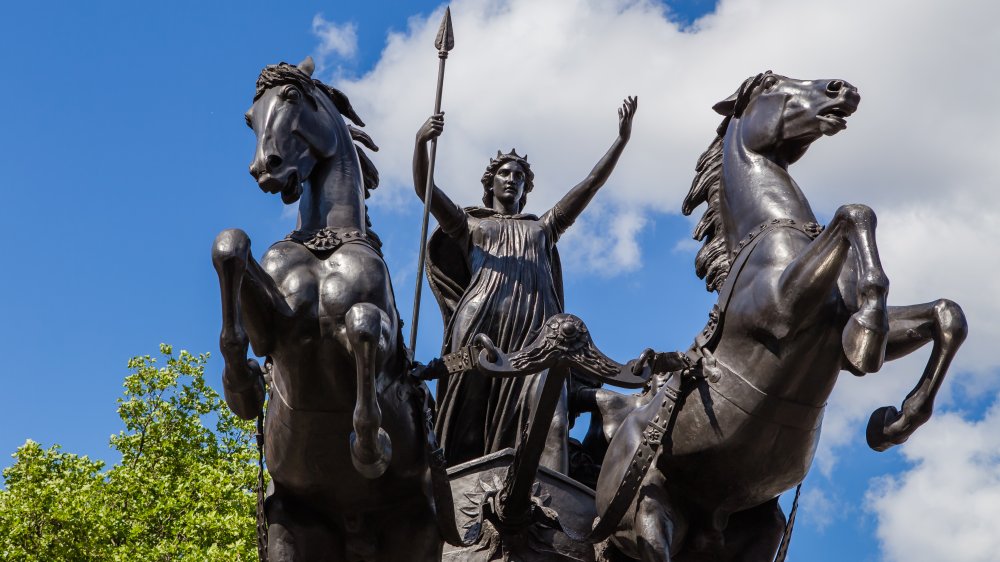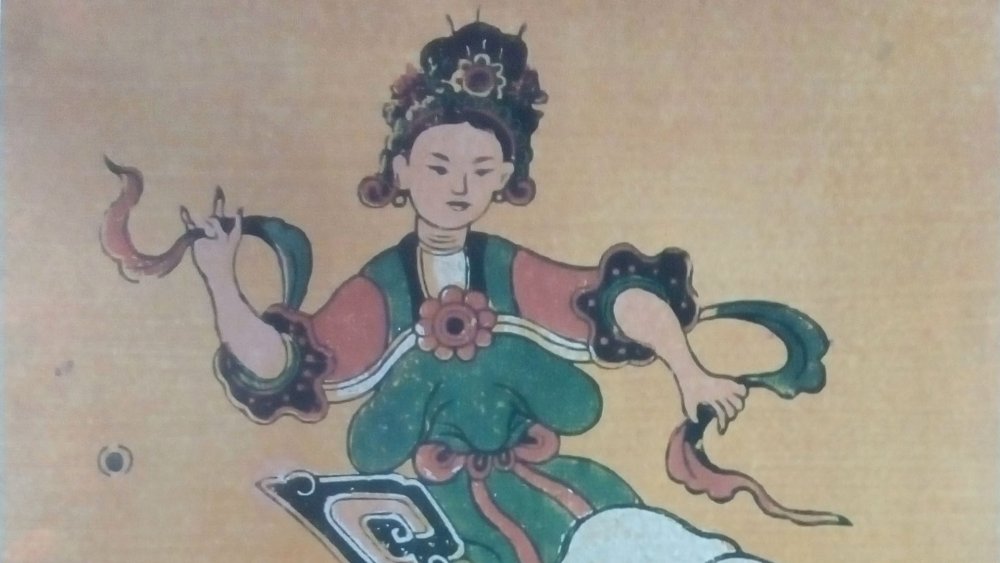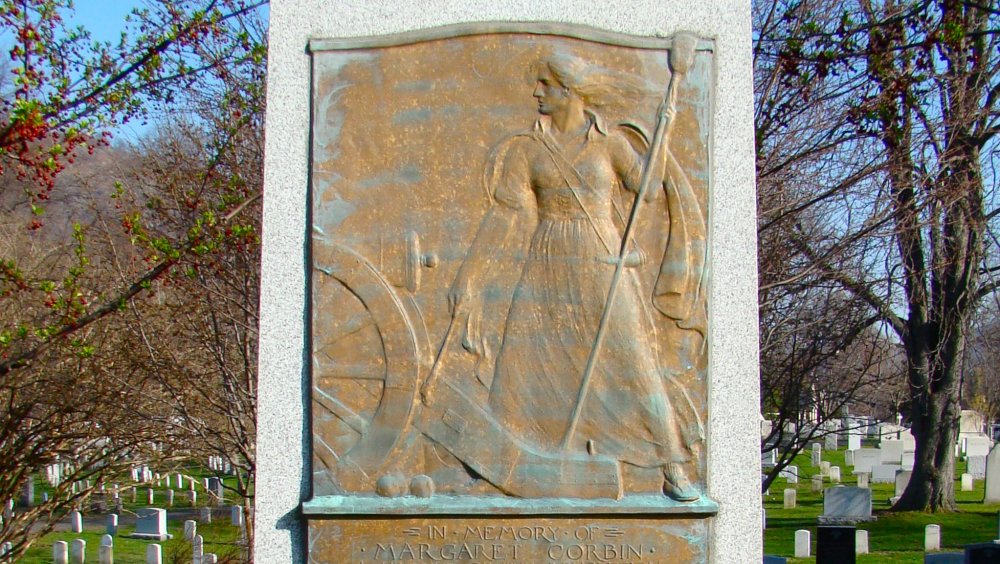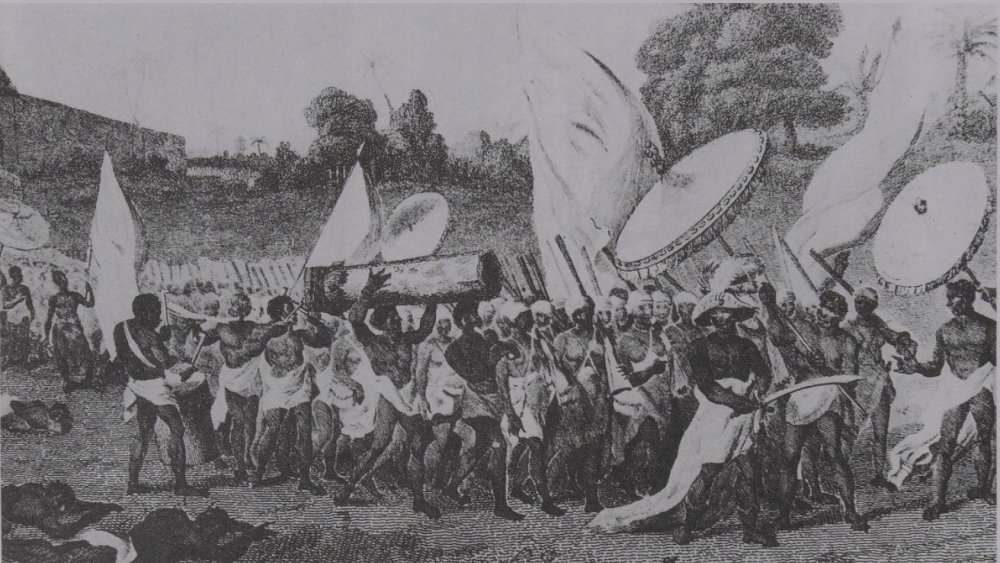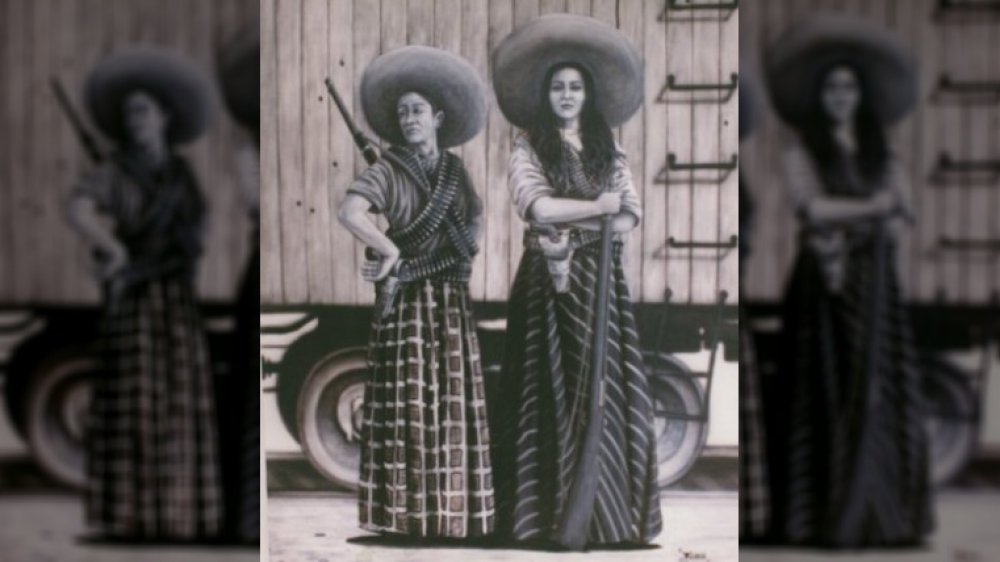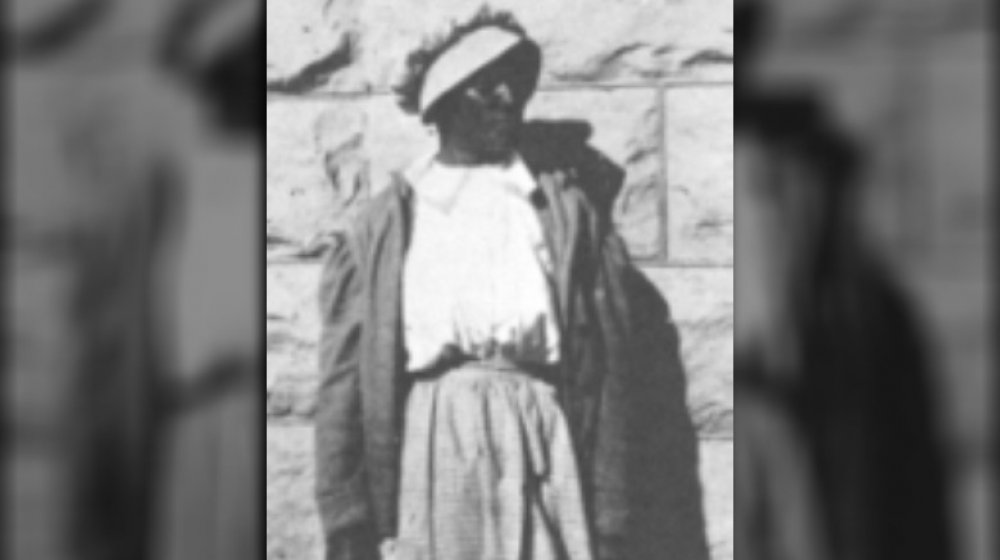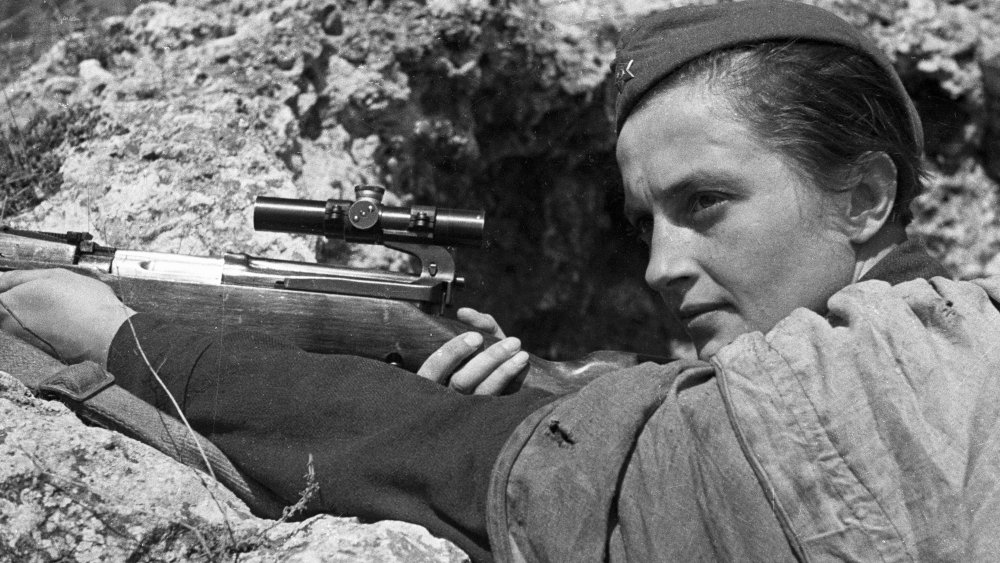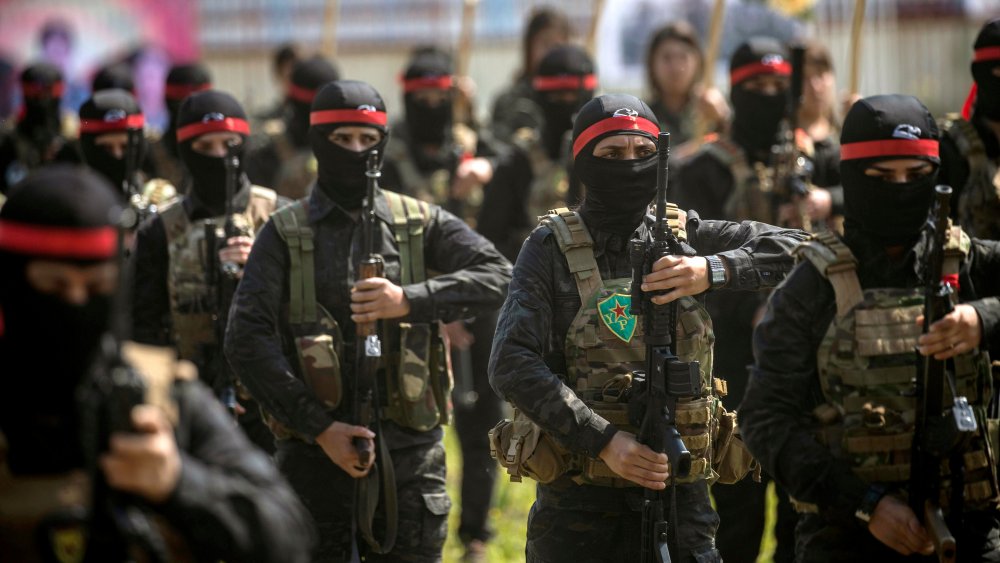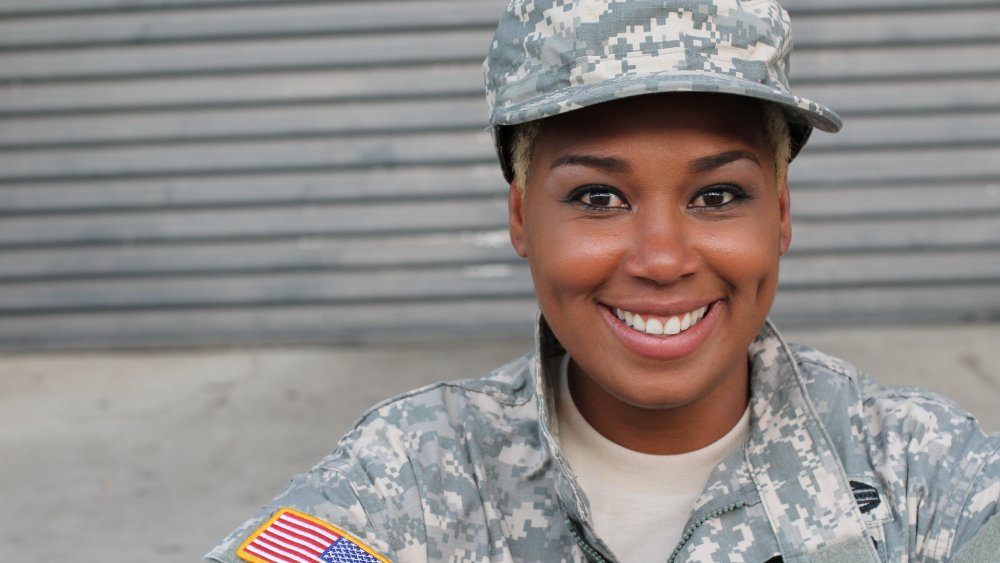The Forgotten History Of Women In Combat
In a history predominately written and controlled by men, the feats of female combatants don't usually make it past the first draft, and when they do, they have a tendency to be portrayed in ways that aren't true to their character or accomplishments. Whereas women fighting on the front lines of modern warfare may seem like a new concept, the truth is that female warriors have dipped their blades in the fires of battle all around the world for millennia, and many became legends in their own time and still inspire stories today.
Like Joan of Arc, some women disguised themselves as men to defend their people. Others, driven by grief and fury, picked up their lovers' weapons and anointed them with brutal revenge, while others still waged war for the sake of bloodlust and glory. The majority of the stories of women on the battlefield tend to revolve around a single person who defied customary gender roles to find a home in the ranks or a position of leadership, but several societies through the ages have allowed women to fight alongside their male counterparts. Legends about the Amazons circulated through western civilization, while all-female bands of African soldiers would be depicted in the Marvel Cinematic Universe. That's all because women have been kicking butt and taking names for longer than you knew.
Cynane, Alexander the Great's sister
Cynane has been buried in the pages of history, overshadowed by a half-brother who conquered a roughly 3,000-mile stretch from Macedonia to India with nothing but swords, spears, and an unhealthy need for glory. Cynane would tag along with her brother and his friends like any normal sibling, but with Alexander the Great as her bro, Cynane wasn't simply joining the gang in a friendly game of tag on the playground. She was going to war.
Cynane's mother, Audata, was an Illyrian princess who raised her daughter in the Illyrian way. That is: women raised to fight equal to men. From childhood, Cynane could outfight, outhunt, outride, and outtrack almost anyone, which didn't quite fit the expectations of a woman in the Macedonian court. Cynane shook those expectations off — she was determined to make her own path without being confined to preconceived gender roles.
The warrior princess was barely out of her teens when her tactical skills turned the tides in a battle with the Illyrians. She'd ridden in battle with Alexander several times before, but in this particular fight, it was her abilities and not his that secured victory, according to Ancient History Encyclopedia. Cynane conducted armies against the Illyrians but charged ahead of her own soldiers when they took to the field, where she secured legendary status by taking down the Illyrian queen in close combat.
The Scythians were real-life Amazons
In ancient Greece and the ancient Roman empire, women were left at home when the men went to war, but that wasn't true for all of their adversaries. Within the mythological traditions of the Greco-Roman world, there lived a race of warrior women known as the Amazons. They were said to be giant, fierce warriors who loosed arrows from horseback, cut off one breast to accommodate their archery style, killed their male children, and were probably lesbians. Of course, those myths were written by men who most likely had their butts kicked by these female combatants a time or two. As with most myths, there's some truth behind these tales.
According to an interview National Geographic conducted with Adrienne Mayor, author of The Amazons, scholars and archaeologists believe these mythological women were part of a nomadic tribe that ranged from the Black Sea to Mongolia. Scythians, as the people were called, fought with bows from horseback, just like the Amazons. Though they never cut off their breasts or killed their male children, Scythians are believed to have been heavily tattooed.
Many Scythian women fought alongside their men and were buried with bows and other weapons. As a nomadic tribe, women held just as much stake in defense and war, and judging by the legends, they were pretty good at it. Arrows don't care which gender nocked them.
Lozen rode alongside Geronimo
The name "Lozen" is actually a war title given to Apache warriors who've stolen a horse while on a raid, and it's the only name known for this warrior woman and spiritual leader today, according to Ancient Origins. Lozen was a two-spirit, a person who embodied both masculine and feminine characteristics, and she was drawn to militant arts from a young age. Growing up, she rode horses like the men and was taught how to fight by her brother, Chief Victorio. According to the Crisosto Apache website, she favored fighting in skirmishes against other Apache over traditional women's roles.
Along with her physical prowess on the battlefield, Lozen was believed to have a supernatural ability that would allow her to know from which direction enemies were approaching. She would put all of her abilities to use after her brother was killed in battle, and Lozen set out for revenge. She'd fight the colonizers alongside the famous war chief Geronimo for the next six years until he eventually surrendered, at which time Lozen was captured as well. She went on to live as a prisoner of war, dying from tuberculosis without ever seeing her homeland again.
A Celtic queen led an uprising against the Romans
It was fairly common in ancient Celtic traditions for women to be trained in the ways of combat, especially during the time when Romans were invading British lands, and the Iceni queen Boudica was no exception. Unlike many of the legendary female warriors from European history, Boudica didn't aspire to be a warrior. She was forced into her role through tragedy.
The majority of Celtic tribes were forced to relinquish their lands when Roman forces conquered southern England in 43 CE, but Boudica's husband, Prasutagus, was allowed to continue his rule under an agreement with Rome, according to Britannica. Apparently, the agreement dissolved upon his death, when he left his wealth to his daughters. The Roman emperor Nero didn't like that, so he took Prasutagus' kingdom. Nero's soldiers crossed several lines by abusing Boudica and her daughters in public.
According to History, Boudica vowed revenge, declaring, "Nothing is safe from Roman pride and arrogance. They will deface the sacred and will deflower our virgins. Win the battle or perish, that is what I, a woman, will do." In the end, Boudica and her forces would lose, but not before killing 70,000 of their enemies, destroying several towns and Roman military posts, and annihilating the Roman 9th Legion, securing herself the status as a national hero.
Trieu Thi Trinh led rebels against the Chinese
Looking over at southeast Asia, one female warrior stands out as an 1,800-year-old legend of Vietnam's struggles against China's southward invasion. Trieu Thi Trinh grew up as an orphan in a rural village with her brother during the second century CE, when the native Vietnamese were being oppressed under Chinese control. After watching almost two decades' worth of plundering and her people being forced to supply their invaders with valuables, Trieu Thi Trinh decided she'd seen enough. It was time to fight back.
With her brother, she moved to the Nua mountains at the age of 19, and they trained soldiers for an upcoming rebellion, according to the Vietnam National Museum of History. By the time she was 21, she'd led the rebels in more than 30 battles against the Chinese. The people of Vietnam embraced her and her cause, while the invaders grew to fear her. Though such a small force couldn't win the war, they wreaked havoc on the gigantic Chinese army until Trieu Thi Trinh was driven to suicide in 248 CE.
The legends say Trieu Thi Trinh stood 9 feet tall and donned gold armor while fighting from a mythical white elephant, a sword in each hand. She remains a national hero in Vietnam.
Margaret Corbin's valor earned her a burial at West Point
During the American Revolution, women served in various roles, from spies to nurses and other support roles, but one woman famously stood above her station and entered active combat on a fury-fueled whim. That woman was Margaret Corbin.
It was common for women to remain with their husbands as camp followers when they went to war. Usually, these followers were poor and didn't expect to survive at home without their money-earning family members, so they tagged along and provided domestic services such as laundry and cooking to the army. A few of them, such as Corbin, were paid to clean weaponry and help with other battle chores, according to the Museum of the American Revolution.
Corbin, dressed as a man, had snuck in to join her husband, John Corbin, at the Battle of Fort Washington, where she loaded his cannon. Well, his cannon became her cannon after John was shot dead by the British. Margaret Corbin immediately took over her fallen husband's cannon and began firing on the enemy, according to the National Women's History Museum, being shot several times as she did. She lived and went on to join the Invalid Regiment. Her bravery at Fort Washington earned her a soldier's pension and ultimately a burial at West Point.
The Dahomey Amazons were the real Dora Milaje
The Dora Milaje are an iconic part of the Black Panther universe. They're the all-women fighting force of the fictitious nation of Wakanda, and you wouldn't want to meet them in the field unless you were begging for a beatdown. The Dora Milaje might be fictional, but they had a nonfiction counterpart here in the real world, whom the French colonizers of West Africa named the "Dahomey Amazons," according to Time Magazine.
These women warriors served as a highly trained unit of soldiers who guarded the king day and night as the final line of protection. The Dahomey Amazons weren't a reserve force that never saw battle, though. They fought in clashes with French colonialism and the transatlantic slave trade during the 18th and 19th centuries. According to The Women Soldiers of Dahomey, the Dahomey Amazons devoted their lives to training, surpassed male soldiers in battle prowess, and would lay down their own lives in an instant to protect their charge. The army was disbanded in 1892 with the fall of Abomey, but, according to the BBC, the Dahomey Amazon way currently lives on as a ceremonial tradition.
According to Time Magazine, historians believe units of trained female soldiers were a common theme in precolonial Africa, which presented more female influence in government than European societies would regularly allow for many years.
Las Soldaderas were an integral part of the Mexican Revolution
The Mexican Revolution ushered in a new age of civil liberties for the Mexican people and served as a social revolution as much as it did a political one. With both men and women fighting against Porfirio Diaz's dictatorship, it allowed women a chance to embody social roles outside of the traditionally feminine and leave behind oppressive circumstances. They could and did serve as soldaderas (also called Adelitas), taking up arms as rebels.
Mexico's revolution was broad, drawing thousands of revolutionaries together to either fight or flee, according to Teen Vogue. Many of the women who did become soldaderas did so to fill in the support gaps (cooking, companionship, etc), but many others took part in actual combat. It was common for the female fighters to dress as men and assume male identities during the war, since not everyone accepted women as fighters. According to History, some high-ranking officials would have soldaderas executed. Though Pancho Villa had the help of roughly 400 soldaderas when he took the city of Torreón, he executed 90 during the war.
Women joined the ranks on both sides of the conflict and had a major impact on the war and what came afterward. As a result, the laws of the new Mexican Constitution would consider women citizens, granting them more rights than they'd previously had.
Cathay Williams was the only female Buffalo Soldier
Cathay Williams is recognized as the first African American woman to enlist in the US Army, but she didn't do so under the most legal of pretenses. Williams grew up as a house slave in Jefferson City, Missouri, before being forced into a support role for the Army after the Union occupied Jefferson City. All captured slaves during that time were labeled as contraband and forced to serve in these roles, according to the National Park Service. Williams was 17.
After the war, in 1866, Williams would take her military career to the next level by enlisting in the regular army under the highly creative name "William Cathay," and she passed as a man thanks to the limited medical exams required at the time. Williams signed up for the 38th US Infantry, according to the Wounded Warrior Project. The unit would go on to become part of the Buffalo Soldiers, in which Williams was the only woman to ever serve.
Illness ended her Army career in 1868, after a doctor discovered she was a woman. Unlike her white counterparts in the Revolutionary War, such as Margeret Corbin and Anna Maria Lane, the Army denied Williams a soldier's pension.
Soviet sniper Lyudmila Pavlichenko had 309 confirmed kills
There were a lot of women who took on Nazis during World War II, either as soldiers or in grassroots groups, but only one who would become one of the scariest snipers in history: Lyudmila Pavlichenko. With 309 confirmed kills, 36 against enemy snipers, Pavlichenko holds the title as the world's deadliest female sniper.
Pavlichenko didn't just pick up a rifle at start firing at Germans. She was a trained shooter, having participated in the Soviet Union's version of an ROTC club, OSOAVIAKhIM, when she was young. In the club, she learned the art of making bullets hit where she wanted them to, according to Business Insider. She tried to join the Soviet army as soon as Stalin broke ties with Hitler, but they denied her for being a woman. Swing and a miss. So, she showed them her marksman certificates from OSOAVIAKhIM, and they told her she should be a nurse. Pavlichenko eventually secured an audition with the army after pestering them enough and was required to fire on two Romanians from a distance. She killed them with ease and was accepted into the Soviet forces. According to Smithsonian, Pavlichenko didn't include the two Romanians in her official count since they were "test shots."
During her time in the war, Pavlichenko would take four bullets, train Soviet snipers, and receive offers of chocolate from the Germans if she was willing to switch sides.
The YPJ is the female combat unit of Rojava fighting ISIS in Syria
In the Rojava region of northern Syria lives an autonomous administration known as the PYD, made up of Kurdish forces living in a kind of political experiment like nothing seen before. The PYD focuses entirely on secular, democratic ideology with a serious devotion to equality. They also kick serious ISIS butt, and according to CNN, about 30-40% of the people doing the fighting are women.
The YPJ is specifically an all-female unit of the YPG militia that has, according to the Independent, played key roles in liberating several ISIS-controlled towns. They wear uniforms, they carry rifles, they fight, and they die as any male soldier would. The press covering Rojava, the YPJ, and the YPG has sparked an influx of volunteer soldiers to join their ranks from around the world. Unfortunately, the YPJ faces serious troubles from the north and south after the rash pullout of US forces from Syria in October 2019.
The US didn't allow women in combat roles until 2013
Women have been allowed to work in military support roles in the US essentially from the country's conception but were barred from combat units until 2013 (with the exception of aerial and naval combat), according to Britannica. Overall, it was viewed as a big step for sexual equality in the US military. The Marine Corps allowed women to volunteer for infantry training in August 2013, with the Army Rangers and Navy Seals following suit in 2015. And although they weren't serving in combat positions, women in the US military have seen combat since September 11, 2001, with at least 88 women being killed in the Middle East between then and 2015.
Britannica estimates that at the time the US ban was lifted, more than 50 countries worldwide were already allowing women to serve in combat positions, while CNN estimates that 16 of those countries are industrialized and that some of them had allowed it for more than ten years, showing how late the US was to the game. Countries like the US, Israel, Germany, and Australia currently allow women to fight, while places like China and Russia don't.
